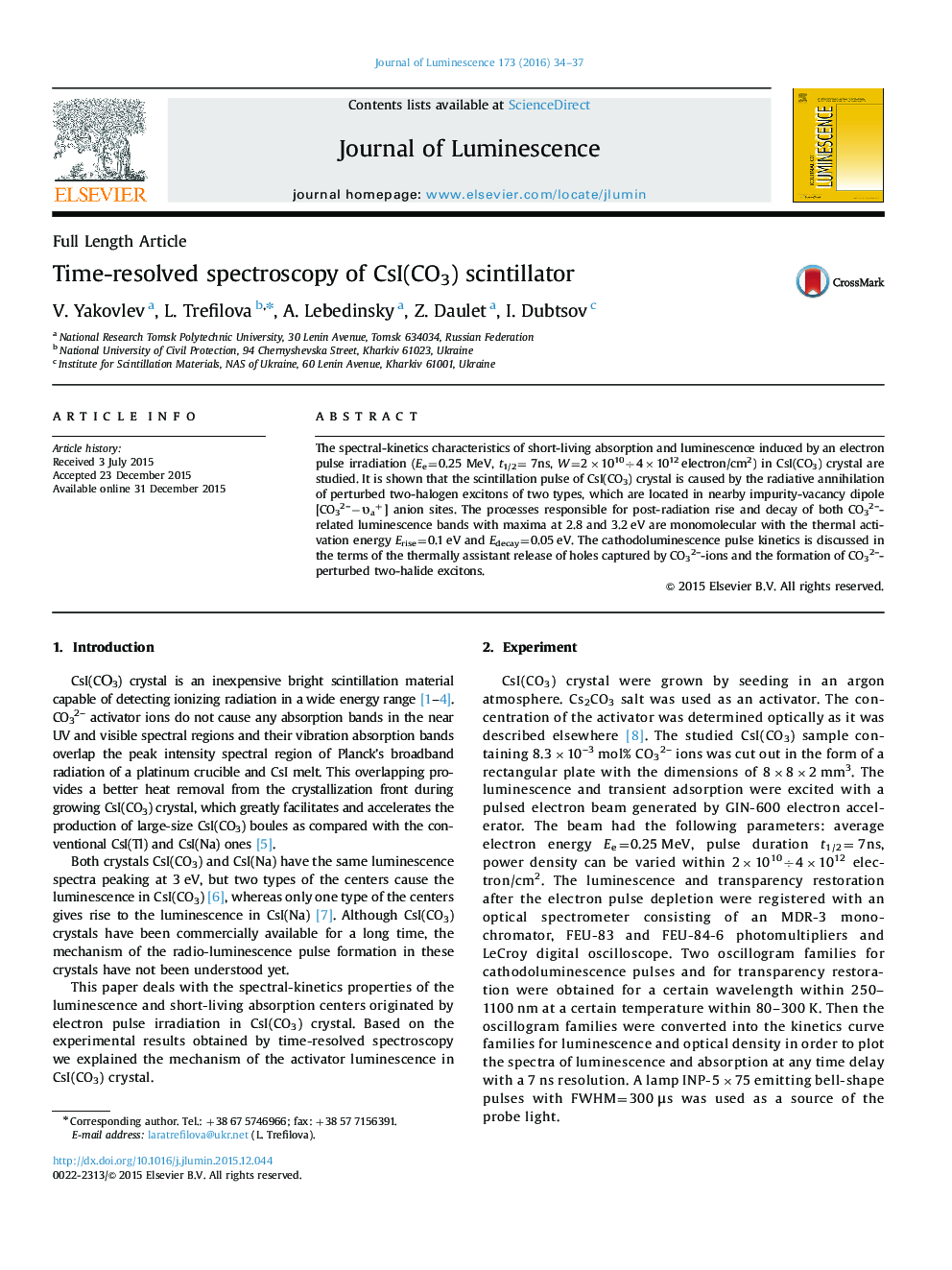| Article ID | Journal | Published Year | Pages | File Type |
|---|---|---|---|---|
| 5398501 | Journal of Luminescence | 2016 | 4 Pages |
Abstract
The spectral-kinetics characteristics of short-living absorption and luminescence induced by an electron pulse irradiation (Ee=0.25 MeV, t1/2= 7ns, W=2Ã1010÷4Ã1012 electron/cm2) in CsI(CO3) crystal are studied. It is shown that the scintillation pulse of CsI(CO3) crystal is caused by the radiative annihilation of perturbed two-halogen excitons of two types, which are located in nearby impurity-vacancy dipole [CO32-âÏ
a+] anion sites. The processes responsible for post-radiation rise and decay of both CO32--related luminescence bands with maxima at 2.8 and 3.2Â eV are monomolecular with the thermal activation energy Erise=0.1Â eV and Edecay=0.05Â eV. The cathodoluminescence pulse kinetics is discussed in the terms of the thermally assistant release of holes captured by CO32--ions and the formation of CO32--perturbed two-halide excitons.
Related Topics
Physical Sciences and Engineering
Chemistry
Physical and Theoretical Chemistry
Authors
V. Yakovlev, L. Trefilova, A. Lebedinsky, Z. Daulet, I. Dubtsov,
